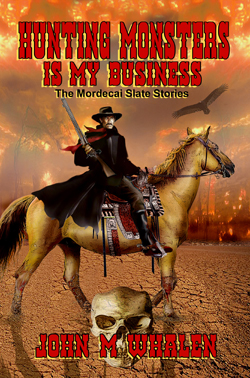
BY JOHN M. WHALEN
Made months before the U.S.’s entrance into World War
II, “All Through the Night†(1941) stars Humphrey Bogart as “Gloves†Donahue, a
New York Irish gangster battling Nazi fifth columnists. “Gloves†runs a bookie
operation and he’s got the world by the tail until he gets a frantic call from
his mother (Jane Darwell) who is upset because Herman Miller, the baker who
makes “Gloves’ †favorite cheesecake is suddenly missing. “Glovesâ€- with his
gang which includes William Demarest, Jackie Gleason, Frank McHugh, and Phil
Silvers- rush over to the bakery and find the baker stuffed in one of the
pastry bins in the basement. A mysterious blonde (Kaaren Verne) shows up and
disappears when the cops arrive.
Gloves and his pals can’t understand why anyone would
want to harm poor old Mr. Miller, but Gloves’ mother tells him that the blonde
who disappeared must know something, and she tells him to find her. Gloves
doesn’t have a clue where to look and is not inclined to pursue the matter
further. But Mom is last seen asking a peanut vender outside the bakery if he
noticed the girl. “Gloves†and his boys
go to his expensive apartment to relax, and no sooner does he light up his
cigar than he gets an angry phone call from Marty Callahan (Barton MacClain),
another Irish mug who owns a nightclub. He’s irate because “Gloves’“ mother is
there raising a ruckus.
“Gloves†and his boys run down to the club and his
mother insists that the girl who was in the bakery works at the club. How she
knows this is never explained. But I guess the peanut vendor must have known. We’ll
never know since his dialogue ended up on the cutting room floor. It’s an annoying gap in the continuity but it really doesn’t matter. The corkscrew script by
Leonard Spigelgass and Edwin Gilbtert is intended to keep the audience guessing
with one surprising reversal after another. What’s more little plot hole more
or less?
Meanwhile, the mysterious blonde is there on the stage
singing the “All Through the Night†theme song written by Johnny Mercer. “Glovesâ€
recognizes her, likes what he sees and tells his mom to go home. He investigates
and in the process of trying get to the girl, “Gloves†finds nightclub manager
Joe Denning (Edward Brophy) shot. Denning holds up the five fingers of his hand
as if trying to tell “Gloves†something. Witnesses see “Gloves†kneeling over the
body so naturally he has to scram. On his way out he sees a cab carrying the
girl and some shadowy figures rushing out of an alley. Through pals he knows at
the cab company, “Gloves†finds the address the cab went to and continues his
investigation.
And that’s just the beginning. It turns out Denning holding up five fingers
was a warning that there was a fifth column movement of Nazis right there in
New York. The mysterious blonde is part of the movement (or is she?), which is
being run by Conrad Veidt and his pal Peter Lorre. They are planning to blow up
a battle ship in New York Harbor. To think, it all started because “Glovesâ€
couldn’t get his favorite cheesecake!
Movie studios had been under pressure for years by
isolationists in Congress to refrain from making films that would incite the
country to war. But with the growing threat of Nazism, the rumors of horrors
occurring in Germany, and the known presence of Nazis in cities all over the
U.S., by 1941 the atmosphere had changed. “All Through the Night,†according to
director Vincent Sherman who shares an interesting alternate audio commentary track
on the DVD with film historian Eric Lax, was an attempt by Warners to make an
anti-Nazi comedy. Sherman admits that reaction to it was mixed. I suppose audiences
weren’t sure what to make of a movie that plays like Damon Runyon meets “Watch
on the Rhine.â€
The idea for the story is based on some fact. There
were Nazis in Brooklyn and other parts of New York in the late 1930s and the
only ones concerned about them were the local gangsters and newspaper men. The
general public and the police couldn’t have cared less. So the ending of “All
Through the Night,†with rival gangs of Irish gangsters uniting and battling
German saboteurs is not as far-fetched as it might seem.
“All Through the Night†is a chance to see a big cast
of Warners’ regulars at or near their peak in a lively film that more than puts
them through their paces. It’s not Bogart’s greatest film, but it continue to
help elevate him up from the B-movie gangster films and westerns he’d once been
relegated to. It would be only a short time later that he would once again be
battling Nazis Veidt and Lorre in “Casablanca.†By then the isolationists were
silent and the country was already at war.
“All Through the Night†presents a good many extras to
enjoy on the DVD release. The audio commentary by Sherman and Lax is highly
informative. Lax presents the historical facts and Sherman tells what it was
like to work under the Warners studio system. The place was loaded with sets
made for earlier movies. All he had to do was walk around and pick what he
needed to make a movie. In those days film makers rarely left the back lot. In
addition to the commentary, there is a cartoon, newsreel a trailer for
“Gentleman Jim†and a comedy short subject about quitting smoking. There’s a lot
to see and hear on this disc. It will definitely keep you watching “All Through
the Night,†and maybe the next night, too.
CLICK HERE TO ORDER FROM AMAZON

(John M. Whalen is the author of "Hunting Monsters is My Business: The Mordecai Slate Stories" . Click here to order the book from Amazon)